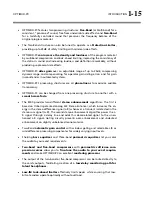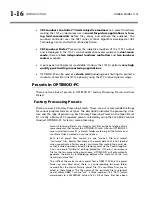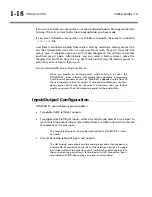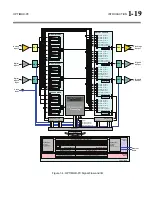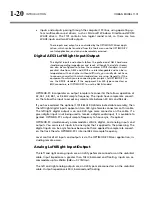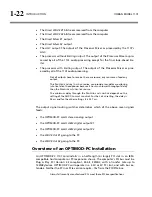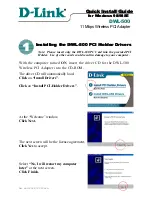
1-28
INTRODUCTION
ORBAN MODEL 1101
Only one client can be logged into a given card at one time; the card will return “in
use” if another client attempts to log into the same card. However, more than one
client can be logged onto a given host computer at once, provided that each client is
logged onto a different card within that host.
It is it is unsafe to send commands to the API of a card within a given
computer while the Control Application is connected to that card via the
Control Application’s “Local” connection
.
This can create conflicts within
the OPTIMOD-PC software that could cause system instability. Moreover,
it is unsafe to simultaneously connect a local and remote instance of the
OPTIMOD-PC Control Application to a given OPTIMOD-PC card.
To resolve this issue safely and without any performance compromise, do
not use the Local connection. Instead, connect the Control Application to
a local card via a “localhost” TCP/IP connection. To do this, create a new
profile, following the instructions in step 11 on page 2-11. Use IP address
127.0.0.1 (localhost). Then connect the Control Application to the local
card as you would to any card residing in a remote computer (step 12on
page 2-13).
If you are not using the 1101’s API, it is OK to use the Local connection.
Section 2 of this manual provides detailed, systematic instructions for setting up a
network of OPTIMOD-PC cards.
Location of OPTIMOD-PC for Netcasting
It is usually best to locate OPTIMOD-PC cards in the same machine that runs the en-
coding software, like Orban OPTICODEC-PC, Microsoft Windows Media Encoder or
Real Networks HELIX Producer. This is because the output of the encoder is at a
much lower data rate than the audio used to drive the OPTIMOD-PC input(s), so it is
less expensive to transport encoded audio than unencoded audio. In Windows in-
stallations, the encoder receives the processed output of OPTIMOD-PC through the
standard Windows’ WAVE signal handling mechanism. You control mixing and rout-
ing through the OPTIMOD-PC I/O Mixer application, which you call from the
T
OOL
>I/O
M
IXER
menu item in the OPTIMOD-PC Control application.
OPTIMOD-PC’s digital inputs accept stereo pairs of uncompressed PCM-format digi-
tal audio. OPTIMOD-PC’s AES3 digital inputs will not accept “bitstream” inputs en-
coded with formats like Dolby Digital® or DTS®. Inputs must be two-channel “PCM”
(Pulse-Code Modulation) format with sample rates from 32 to 96 kHz and 8 to 24 bit
word length, following standard AES3 or S/PDIF protocols. Because both digital in-
puts have sample rate converters, both inputs can be mixed (even if asynchronous
with each other) and neither need be synchronous with the output.
AES3 requires a balanced connection (two wires surrounded by a shield)
terminated by XLR-style connectors, while S/PDIF is usually transported on
an unbalanced coaxial cable terminated in RCA connectors or via an opti-
cal connection. (OPTIMOD-PC does not support optical I/O.)
AES3 and S/PDIF are often interoperable. However, the nominal AES3
signal level is larger than the nominal S/PDIF signal level, so there is no
Содержание Optimod-PC 1101
Страница 4: ......
Страница 14: ......
Страница 121: ...OPTIMOD PC OPERATION 3 1 Section 3 Operation Figure 3 1 The OPTIMOD PC Control Application...
Страница 192: ...3 72 OPERATION ORBAN MODEL 1101...
Страница 204: ......
Страница 210: ......
Страница 212: ...5 2 UNINSTALLATION ORBAN MODEL 1101...
Страница 236: ......


